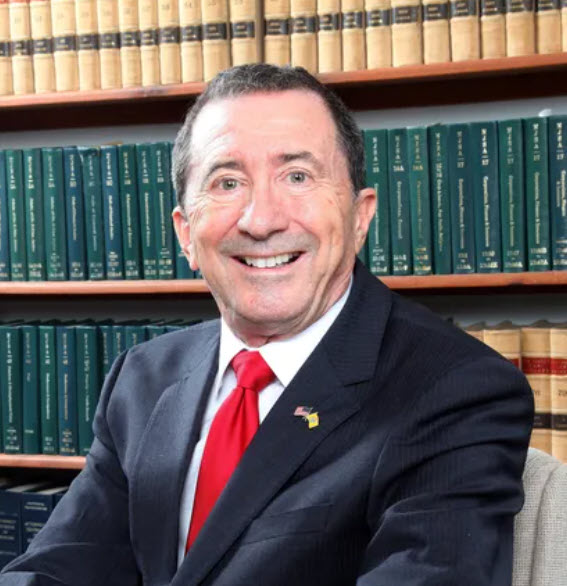Which is more important, protecting lives or civil service pensions?
By Seth Grossman, Political Columnist
On April 12, 2007, a little more than five years ago, then Gov. Jon Corzine was nearly killed when the big SUV he was riding in clipped the back of a white pick-up truck it was trying to pass, ran off the Garden State Parkway and slammed into a guardrail by mile marker 44 in Galloway Township.
The driver of the governor?s SUV was a young state trooper named Robert Rasinski. Our daily newspaper reported that Rasinski ?suffered only minor injuries? and was released from the hospital the next day. Rasinski resumed his regular duties until he was reassigned to stand guard at the Statehouse one year later.
Last week, Rasinski was in the news again. It seems he retired from the New Jersey State Police in 2010, three years after the accident. Although less than 40 years old, he got an early disability pension for ?back pain and post-traumatic stress? based on his final salary of $91,309 per year.
He only got 40 percent of that ? $36,524 per year, plus free lifetime medical, because the pension board ruled that Rasinski had ?significant responsibility? for the crash that caused his injury.
But last week, a state administrative law judge reversed that decision. He gave Rasinski a full pension of $62,872 ? two thirds of his final salary, plus the free medical. If Rasinski is now 36 years old, he is expected to live 43 more years and collect $2,703,496, not counting another $360,000 for his lifetime health insurance.
How could the administrative law judge find that Rasinski had no ?significant responsibility? for this accident? None of us will ever know. The judge sealed the case so that none of those facts will ever be known to the public.
But covering up the truth was always part of this case.
The day after the accident, every newspaper in the state reported that the state police was blaming the driver of a red pick-up truck for causing the accident and fleeing the scene. But the story changed two days later when police found that driver.
Ironically, everyone who listened to local talk radio knew right away what caused the accident. Corzine was speeding.
The governor had agreed to appear on national TV in Princeton with 770 AM talk show host Don Imus and members of the Rutgers women?s basketball team, whom Imus had previously insulted. But Corzine was promoting his toll hike scheme on the Pinky Kravitz radio program on 1400 AM in Atlantic City until about 5:45 p.m. That gave Corzine only 75 minutes to cover 91 miles ? a trip that normally takes two hours during rush hour.
Eventually, the state police reported that the black box of Corzine?s SUV showed that the governor was going 91 mph ?five seconds before impact.? But that was after Rasinski slammed on the brakes. How fast was Rasinski going 10 seconds before impact ? when he tried to pass that white pickup?
The black box in the SUV had that answer. So did anyone who checked when the governor?s EZ Pass went through the Pleasantville Toll Plaza on the Expressway and did the arithmetic. But no state official or newspaper had any interest in knowing that information.
How fast did Rasinski plan on going after he got off the Garden State Parkway, and onto the crowded and dangerous two lane road to Princeton? Who cooked up the phony story about the accident being caused by the guy in the red pick-up truck? Was it Rasinski? Was it one of the two troopers in the SUV behind him going just as fast? Did the three of them do it together?
Again, nobody in government or the media cared? Do they all accept the idea that protecting civil service careers and pensions is more important that learning the truth and saving lives?
Not a single law enforcement agency charged Rasinski or the driver of the car behind him for speeding or careless driving.
I filed those charges days before the statute of limitations was about to expire. But Chris Brown, the municipal court judge for Galloway Township (now a Republican Assemblyman for Atlantic County), dismissed my complaint. He ruled that photos of the wreckage of the governor?s SUV and the state police report of 91 mph speed registered by the black box of the SUV did not show ?probable cause? that a violation of any traffic laws had occurred.
Earlier that morning, Chris Brown found someone else (not a police officer) guilty beyond a reasonable doubt without any witnesses ? simply because his car had run off the road.
(Reprinted from August 8, 2012 Current-Gazette Newspapers of Atlantic and Cape May Counties, http://www.shorenewstoday.com/snt/news/index.php/politics/28241-which-is-more-important-protecting-lives-or-civil-service-pensions.html)
Somers Point attorney Seth Grossman appears on 92.1FM 8-9 a.m. Saturday. For information see www.libertyandprosperity.org, email sethgrossman49@gmail.com or call (609) 927-7333. Breakfast discussions are held 9:30-10:30 a.m. every Saturday at the Shore Diner on Fire and Tilton roads in Egg Harbor Township.
(Image Sources – https://encrypted-tbn2.google.com/images?q=tbn:ANd9GcTAuup40r_kDt53eADx4-1-uGDdokaFljcF7sRXtGGveI1tsWbt & http://static.guim.co.uk/sys-images/Guardian/Pix/pictures/2012/5/10/1336637859335/Public-sector-pensions-pr-003.jpg)



From the Asbury Park Press:Gov. Corzine and the Legislature say they will keep property taxes from rinisg by capping them at 4 percent a year.Like most of the proposals they have put forth for property tax relief, this one is a sham. Why? For starters:A 4 percent cap is actually higher than the current caps on municipal and school spending. The municipal cap is 3.5 percent. The school cap is 2.5 percent or the rate of inflation, whichever is higher.The 4 percent cap is higher than the 2006 rate of inflation in the New York-North Jersey area ? 3.3 percent.Despite the caps now in place, property taxes have continued to increase by an average of 7 percent a year ? roughly double the school and municipal caps.A 3.5 percent cap doesn’t actually limit spending increases to 3.5 percent because large portions of the budgets are exempted from it. Although the items that would be exempted under the Democrats’ cap seem to change daily, major exceptions are sure to remain.Under a version expected to be introduced in the Senate, the caps would exclude school costs associated with enrollment increases and health care costs under existing contracts. Municipal and county governments and fire districts could exempt debt, employee pensions, uncollected taxes and health care costs under existing contracts. And towns would be able to petition the state or seek voter approval to exempt costs from leases and utilities and those mandated by a court, the state and the federal government. What’s left to exempt?